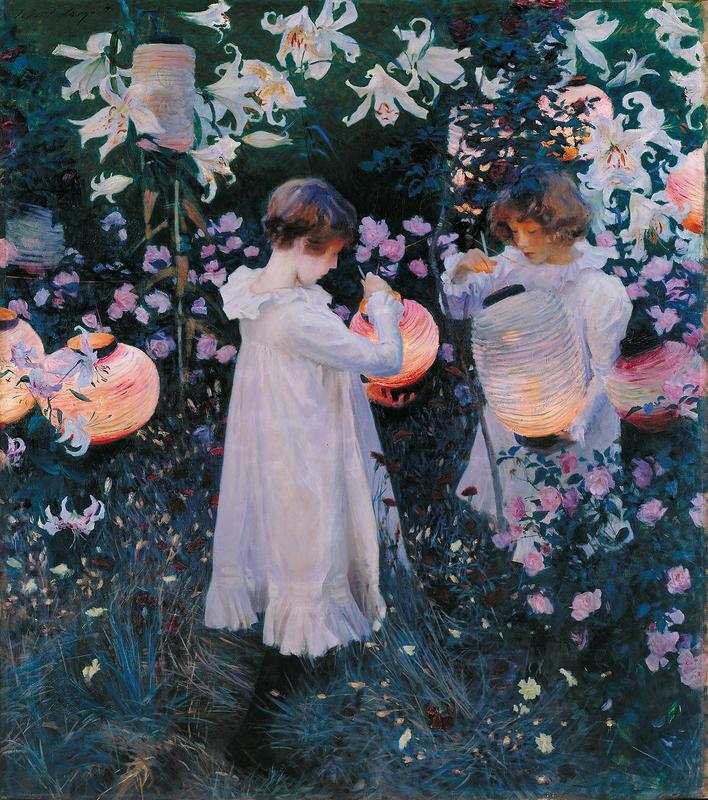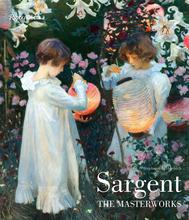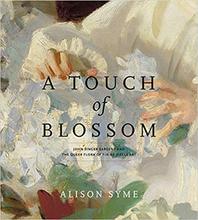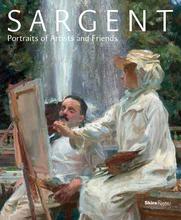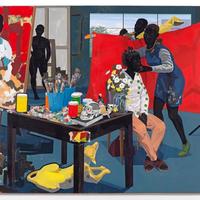More about Carnation, Lily, Lily, Rose
- All
- Info
- Shop

Contributor
Carnation, Lily, Lily, Rose made John Singer Sargent famous for doing what French Impressionists had already been doing for almost ten years.
After the overwhelmingly negative response to the controversial Madam X, John Singer Sargent decided to paint something on the other end of the scandal scale: children. He got the idea after a diving incident in the Thames where he noticed Japanese lanterns hanging on trees across the river. He then conceived a picture of a young girl lighting these lanterns while the atmosphere around her darkened. The perfect picture of childhood innocence.
Sargent’s original model for his painting was Katherine Millet, the five-year-old daughter of Francis Davis Millet (not to be confused with Jean-Francois Millet, though both were painters). But Sargent insisted that the girl in this painting had to be blonde, and little Katherine was unfortunately brunette and not a fan of the blonde wig Sargent made her wear. Thankfully, Sargent had a lot of other friends with children, including Francis Barnard, the illustrator for many Charles Dickens’ novels. The Barnard girls, Dorothy (who went by Dolly) and Polly, were older than Katherine Millet, and the best part? They were already blonde!
After finding his models, Sargent moved into an artists’ colony in Broadway, Worcestershire, and spent every day for two years working on Carnation, Lily, Lily Rose. Between 6:30 and 7pm, when the light was just right, Sargent interrupted the Barnards' daily tennis game so Dolly and Polly could pose for him. He proceeded to sketch them furiously during this perfect but rapidly declining dusk that never lasted more than a few minutes. This process was so tedious that self-deprecating Sargent nicknamed the painting “Darnation, Silly, Silly, Pose.” The actual name of the painting came from a popular summer song by Joseph Mazzinghi that the Barnard family often sang together. Sargent, who never married or had kids of his own, attempted a counterfeit family life through this painting.
At the 1887 Royal Academy Exhibition, Carnation, Lily, Lily, Rose was met with mixed, but mostly positive, reception. The painting was revolutionary (to the British) through Sargent’s use of colors and light, leaving a permanent note in the history of English painting. Now considered one of his most famous paintings, Carnation, Lily, Lily, Rose was essentially responsible for putting John Singer Sargent on the map as a talented portrait artist.
Some critics were unimpressed with Sargent’s French painting style; Sargent was even mistaken for a French painter due to the painting’s Impressionist nature. But despite natural imagery that tells us Sargent painted en plein air (a fancy term for painting outside, rather than inside a studio), Sargent was not exactly an orthodox Impressionist. For instance, Sargent’s use of restrained color, especially the whites and blacks, was definitely not aligned with Impressionist preference of bright, brilliant color. He also employed traditional modeling methods that involved careful planning choices, such as enlisting the Barnard maid to sew white dresses for the girls, or replacing wilted flowers with artificial ones. According to Monet, leader of the Impressionist club, Sargent was too influenced by traditional painters to be a true Impressionist. Looks like Sargent didn’t leave a very good impression on the Impressionists. (See what we did there?)
Sources
- Carter Ratcliff, John Singer Sargent (New York: Abbeville Press, 1982)
- Stanley Olson, John Singer Sargent: His Portrait (New York: St. Martin’s Press, 1986)
- Patricia Hills John Singer Sargent (New York: Harry N. Abrams Inc., 1986)

Sr. Editor
In Carnation, Lily, Lily, Rose (which we'll abbreviate going forward), Sargent proves that paintings don't have to be so "serious."
Style-wise, CLLR is an excellent example of aestheticism, a trend in art where subject matter, like historical events or mythology, mattered much less than the beauty of the painting itself, regardless of what it was depicting. The motto was "art for art's sake," and James Abbott McNeill Whistler and Dante Gabriel Rossetti were both fans. Positive reviews from the time laud Sargent for this painting's originality, and that he has succeeded in "Leaving the nude and the historic for works of pure fancy.
The children in this painting are Alice (nickname "Polly") and Dorothy ("Dolly") Barnard, the daughters of Sargent's friend and fellow artist Frederick Barnard. Fred's story is a bit tragic: after the death of his son, Polly and Dolly's brother, Fred became very depressed and began to abuse the opioid laudanum, which is similar to morphine. One night, passed out under the influence of the drug, an ember from the pipe he was smoking caught his bedclothes on fire and he was killed. Sargent remained close to the girls, occasionally taking them along on painting trips, and naming them in his will.
Sargent painted CLLR while summering in a rural English village in Cotswald in 1885. The town, Broadway, had a vibrant community of Victorian era artists, poets, and authors, and so was fertile ground for creativity.
Sources
- Fields, Jill. An Intimate Affair: Women, Lingerie, and Sexuality. Berkeley: University of California Press, 2007.
- Hellen, Rebecca. "How John Singer Sargent painted Carnation, Lily, Lily, Rose." Tate, https://www.tate.org.uk/art/artworks/sargent-carnation-lily-lily-rose-n….
- House, John. Monet: Nature into Art. New Haven: Yale University Press, 1986.
- Mazzinghi, Joseph. THE WREATH, A Pastoral Glee, FOR THREE VOICES… London: Goulding, Phipps, 1808.
- "Meilyr Jones brings Carnation, Lily, Lily Rose to life." Tate, https://www.tate.org.uk/art/artworks/sargent-carnation-lily-lily-rose-n….
- Scribner's Magazine, Volume 34. New York: Scribner's, 1903.
- "'Ye Shepherds Tell Me' Song Sheet." archive.org, https://web.archive.org/web/20120319045955/http://jssgallery.org/Letter….
- Simpson, Marc; Sargent, John Singer; Ormond, Richard; Weinberg, Helene Barbara; Institute, Sterling and Francine Clark Art. Uncanny Spectacle: The Public Career of the Young John Singer Sargent. Yale University Press. p. 155.
Featured Content
Here is what Wikipedia says about Carnation, Lily, Lily, Rose
Carnation, Lily, Lily, Rose is an oil-on-canvas painting made by the American painter John Singer Sargent in 1885–86.
The painting depicts two small children dressed in white who are lighting paper lanterns as day turns to evening; they are in a garden strewn with pink roses, accents of yellow carnations and tall white lilies (possibly the Japanese mountain lily, Lilium auratum) behind them.
The painting is dominated by green foliage, with no horizon or other horizontal line to give a sense of depth. The viewer seems to be on a level with the children but also looking down on them.
The two subjects of the painting are the daughters of the illustrator Frederick Barnard – a friend of Sargent's. Dolly, left, was 11 years old and Polly, right, seven years old; they were chosen for their blonde hair, replacing Sargent's original model, Francis Davis Millet's five-year-old daughter, dark-haired Katherine.
The title comes from the refrain of a popular song "Ye Shepherds Tell Me" by Joseph Mazzinghi, a pastoral glee for a trio of male voices, which mentions Flora wearing "A wreath around her head, around her head she wore, Carnation, lily, lily, rose".
The work is set in an English garden at Farnham House in Broadway in the Cotswolds, where Sargent spent the summer of 1885 with Millet shortly after moving to England from Paris to escape the scandal caused by his 1884 painting Portrait of Madame X. The author Robert Louis Stevenson was also staying there while writing A Child's Garden of Verses and his verses inspired Sargent.
Sargent also took inspiration from the lanterns that he saw hanging among trees and lilies while boating on the River Thames at Pangbourne with American artist Edwin Austin Abbey in September 1885.
Sargent wanted to capture the exact level of light at dusk so he painted the picture en plein air – outdoors and in the Impressionist manner.
Every day from September to November 1885, he painted in the few minutes when the light was perfect, giving the picture an overall purple tint of evening.
The flowers in the garden died as summer turned to autumn, and they were replaced with artificial flowers.
Sargent resumed painting the following summer at Millet's new home nearby in Broadway and finally finished the painting by the end of October 1886.
In the course of working, Sargent cut down the rectangular canvas, removing approximately 2 feet (61 cm) from the left side, to leave an approximately square shape.
The work received a mixed reception at the Royal Academy summer exhibition in 1887, with some criticising his "Frenchified" style. However, there was also much praise, and Sir Frederic Leighton, President of the Royal Academy, encouraged the Tate Gallery to buy the painting later that year, using money from the Chantrey Bequest. It was the first of Sargent's works to be acquired by a public museum. The painting remains part of the Tate collection and is displayed at Tate Britain.
Check out the full Wikipedia article about Carnation, Lily, Lily, Rose

